|
BULB LOG 51 --- 18th December 08

Fallen leaves on bed
I am still working my way around the garden collecting the fallen leaves from the bulb beds and tidying up the plants that need to be cut back. I am never in too big a hurry to collect the leaves as soon as they fall, partly because I like to wait until they are all off the trees so I only need to lift them once but also because I believe that they break down better in the heap if they have lain around and got wet on the beds for a while. All that lovely leaf mould will be used in my bulb potting mix next year.
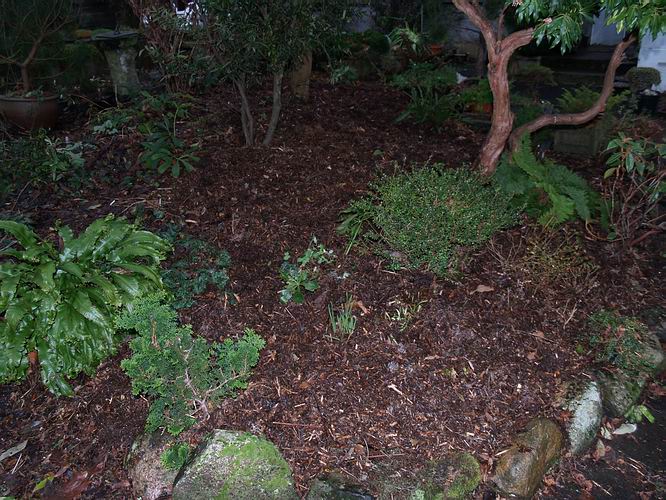
Mulched bed
Once I have lifted the leaves I mulch the beds with the shredded remains of our hedge trimmings and other woody prunings that have been composting since the summer. I am a great believer in never throwing anything away and that is especially true in the garden where everything that can be composted and returned to the ground to retain the goodness is kept and not thrown away. We do have a local garden waste collection every two weeks and plenty people put out all their garden waste and most do not realise that they are also throwing away the goodness of the garden. Many essential elements are locked up in the prunings and fallen leaves- these have come from the soil and if they are not returned the soil will become depleted and plants can start to become sick. You can fertilise with compound fertilisers but the good old organic way of composting your garden waste and returning it back to nature is the best.

Galanthus regine olgae 'Hyde Lodge'
I enjoy this job as it gives me a chance to discover the early sprouts of spring and for the first time ever we have a snowdrop opening before the turn of the year - it is white!! I have tried for years to get some of the early flowering snow drops to grow in our garden but most have not survived. This is the first time I have succeeded and it was given to us with the label Galanthus regine olgae 'Hyde Lodge'.

Narcissus 'Cedric Morris'
Narcissus 'Cedric Morris' is another of the early bulbs and I have no problems growing it either in the garden or under glass. The very low light level does mean that it flowers on a long stem and because of this the ones in the garden have a tendency to flop over. For the last few years Narcissus 'Cedric Morris' has had flowers open by early December but they are nowhere near opening this year. I mentioned the later flowering of the Narcissus in a recent bulb log and said it was down to the temperature being low after the September storm. This week I heard a weather report which stated that we have had the coldest start to a winter for a number of years with the average temperature being 2C lower. Many people in our area do not think it has been that cold but there is a difference between humans and plants in that we remember the extremes so if we had some very cold nights where the temperature dips down to say -15C the people would have thought it had been cold -however the plants respond to the average tem
peratures.

Fritillaria meleagris bulb with roots and shoot
While moving a fern I accidentally dug up some Fritillaria meleagris bulbs which remind us that even though we will not see their flowers for three months at least they are active underground producing roots and shoots ready for the spring spectacular.
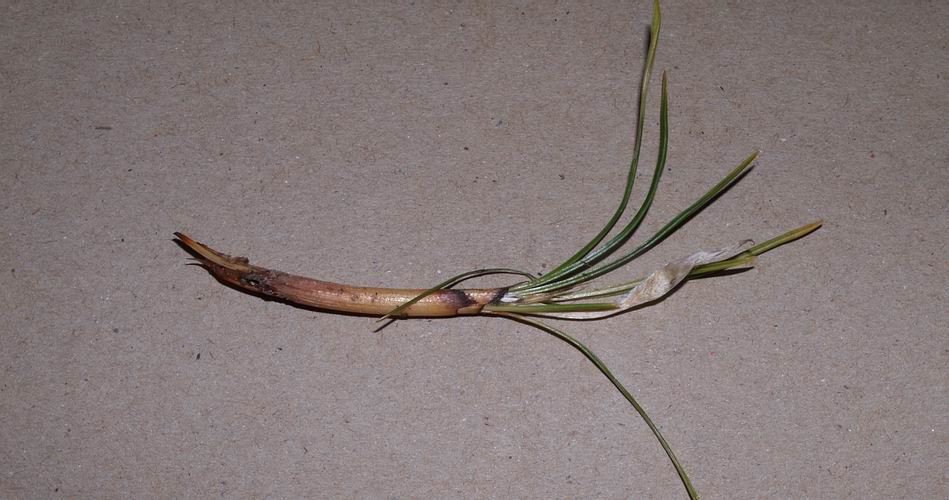
Crocus leaves with basal rot
Moving into the bulb house I spotted a pot of crocus with one plant showing yellow tips to the leaves - a gentle tug confirmed my suspicion. It is so often the case when you see the leaves discolouring and looking a bit floppy that the problem lies under ground and rotting at the base is a common problem. First thoughts are that I have kept the compost too wet and so causing this rot but the rest of the plants in this pot are very healthy and growing strongly so I think that the problem lies with the individual corm which has had some kind of damage or infection that makes it susceptible to rot. I do not apply treatment for this problem as it is always just individuals that succumb - the rest of the corms in the pot should grow well and increase making up for the odd losses. I get very upset when I lose bulbs like this and every year there are losses but as long as they are out numbered by the successes then all is well and despite the disappointment, it is this challenge, along with the beauty of the flowers
that keeps me growing bulbs.
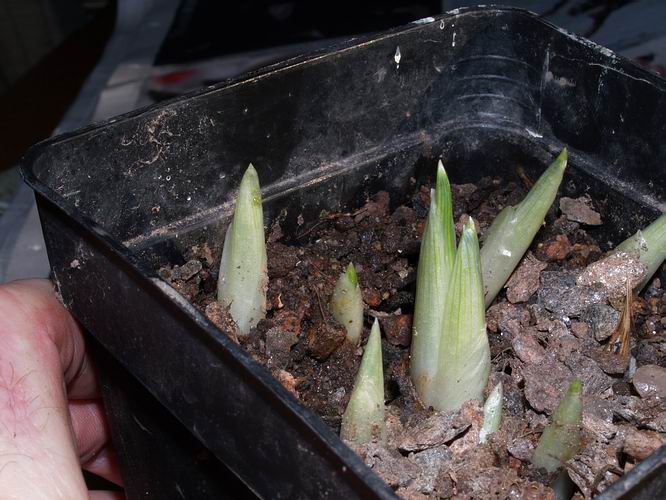
Iris reticulata shoots
In the autumn Maggi bought some Iris reticulata bulbs to pot up for presents in the spring. I decided to see if I could force a pot by bringing it into the warmth of our kitchen but it did not come alone.

Aphids
Here is a shoot; I have flipped the picture onto its side to get a larger view, complete with aphids. A long time ago I worked out that aphids can survive inside some bulbs between the tunics and the scales where they wait for the right conditions to emerge. Obviously these aphids have been lured out by the warmth and the only place I can see they have come from is within the bulb. This is the reason that I often spray my bulbs with a systemic insecticide while their leaves are still green just before they start to go dormant. That measure has certainly reduced the winter aphid problem and I mostly only find them on bulbs that have been brought in when dormant.
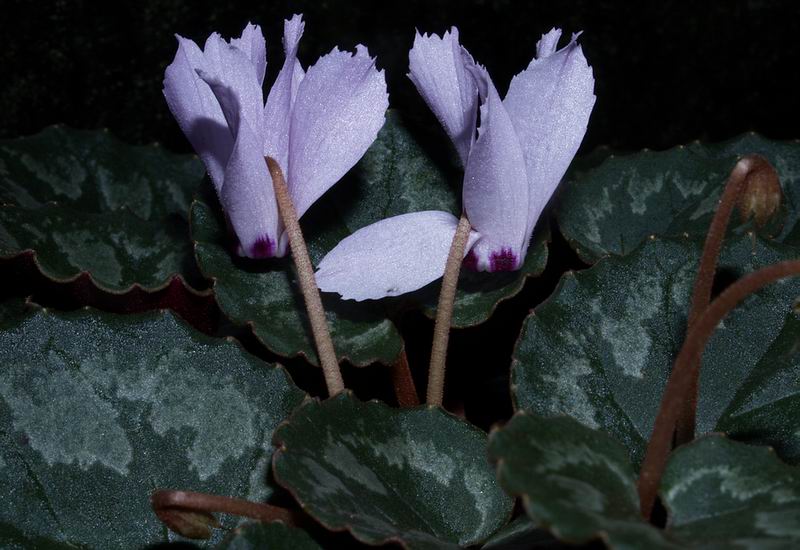
Cyclamen mirabile
A few new flowers, all taken with flash as the light is too low for photography without this aid. Some of our young plants of Cyclamen mirabile are just flowering now and they are very welcome to brighten these dull days as they rise above their beautifully patterned leaves.
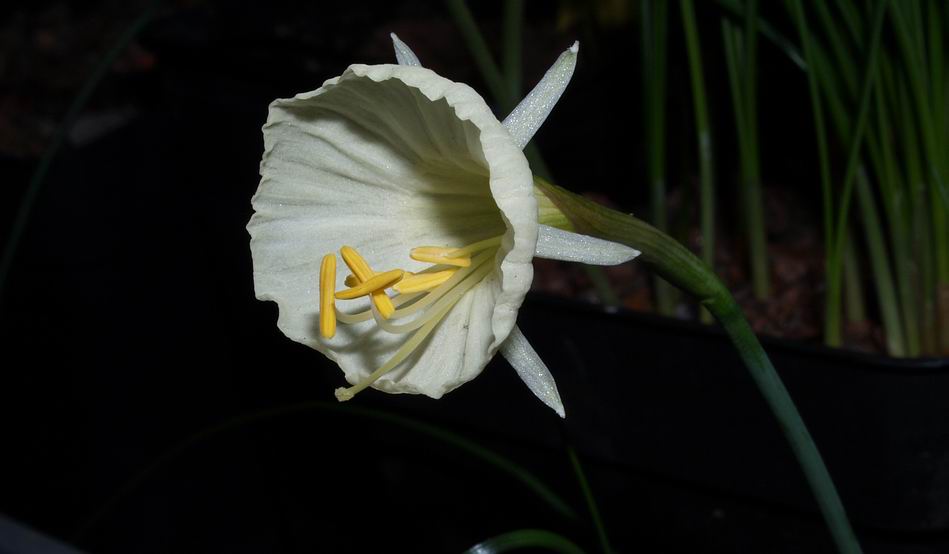
Narcissus seedling with turned in corona
It is so exciting when a bulb you have raised from seed flowers from the first time especially when it turns out to be something different. This is a stray seedling rescued from the sand plunge so I have no idea as to its parentage but an educated guess is that Narcissus romieuxii is involved and possibly N cantabricus foliosus is in there as well.

Side view of Narcissus seedling
If you have not noticed what make this narcissus different perhaps this profile will let you see that the corona is restricted at the mouth - it flares out then turns back in again making it quite distinctive and worth watching.

Twin flowered Narcissus hybrid
I say worth watching because the excitement of finding the unusual or different forms in your seedlings extends beyond the first flowering. Here is another very unusual seedling raised from seed of Narcissus x 'Camoro' a hybrid between Narcissus cantabricus foliosus and N. romieuxii it has two flowers on one stem - I have never had this feature in any of this type of narcissus before. Now I have to wait another year to see if this is a genetically fixed and stable feature or if it is just a mutation that will not happen again.
^ back to the top ^
|

